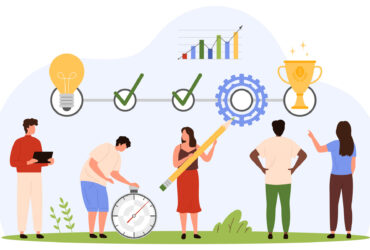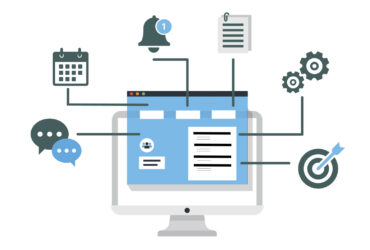Improve Goal Setting to Achieve Positive Outcomes


What drives outcomes in human services programs? Goals.
Goals drive outcomes and the more goals set; the more progress is achieved. And while goal-setting is encouraged in most human services programs, it is not widely and intentionally practiced. Program staff may set a goal or two with a participant, but not return to the goal to access progress until months later. Without being able to visual the goal and have it be “top of mind”, forward progress towards the desired results is difficult for anyone to achieve, let alone those dealing with the toxic stress of poverty.
Goal setting is very powerful and when practiced consistently builds it build critical Executive Function (self-regulation, planning, sustained effort, etc.) skills that lead to positive outcomes. In articulating their goals, participants are able to see their path forward and identity the steps need to get where they want to go, and to plan ahead for what might get in the way.
If you are one of the many programs that has adopted a goal-oriented coaching methodology such as GPDR/R (Goal, Plan, Do Review/Revise), Goal4It!, FCC (Family Centered Coaching) or MyGoals then let me congratulate you for your efforts. Your staff is already practicing goal setting and so you know firsthand the impact it has on achieving self-sufficiency.
Writing Down Goals
As we all know, simply thinking about goals won’t yield results. Being able to articulate meaningful goals, by writing them down and creating detailed action plans is paramount to goal achievement.
TuaPath was purposely designed to engage participants and allow them to write in their own words their goals and the action steps to get there. By writing down the goals it helps clarify what (you) want to achieve, it ensures emotional and intellectual engagement and builds motivation and momentum.
To help participants articulate their goals, TuaPath systemizes the process by prompting them through a series of questions which can reflect the goal-setting methodology your program has implemented or be structured around good SMART goal setting practice. Each and every time they create a goal, whether it is short or long term, they follow a step-by-step process, thus building good goal setting skills through practice. By declaring the goal, the participant is setting themselves up for greater success as they ‘own it” and are accountable for bringing it to fruition.
When participants type out their goal, they have a written plan. As life is overwhelming, they don't see how they can get to that goal before they write it down. Just the act, the action of writing it down, helps them to actually figure it out for themselves. Because the process is now interactive I'm seeing more results.
GST Michigan Works! Coach
Tracking Progress
When working towards a goal(s), it’s important to measure and celebrate progress. Even if the progress is small, any improvement is progress towards the goals.
In TuaPath, participants can at any time view their goals, re-prioritize them if needed, as well as access how-to or resources to help them achieve the goal. In an evaluation study conducted by The Prosperity Agenda for GST Michigan Works! case managers reported that having visual access to written goals was an effective motivator for participants in following-through with their goals. When participants were able to review progress routinely, they could see just how much they had achieved and thus, were more likely to stay engaged in the program to work on their goals.
Celebrate Success
TuaPath goes one step further in tracking progress, as all completed action steps and goal achieved are celebrated as Victories. Participants often will say they’ve never had a victory in their life, but now in TuaPath they can see that with each accomplishment, while it might be a small step, they are making forward progress. And for those times when life throws them a curve ball and they get discouraged, they can reflect back on their successes, if needed, in order to keep the momentum going.
TuaPath helps with retention as they can see their victories. They are staying with it, going on to the next step and not giving up.
GST Michigan Works! Coach
More Productive Check-ins
Many programs are returning to in-person check-ins, while others continue to offer virtual meetings, but no matter your policy, getting participants to the meetings and ensuring they are productive for them can be a challenge.
TuaPath helps to solve the issue of meeting no-shows by automatically sending out email and/or text message reminders, saving case managers valuable time with not only the follow-up effort, but also in rescheduling when the participant fails to attend the meeting.
In situations where transportation and childcare are barriers to meeting regularly, case managers can meet virtually with participants. We’ve heard time and again that because of TuaPath, case managers are better able to meet with participants in crisis when the need arises and if preferred, have shorter check-ins but more frequently.
Then there is the issue of the meeting itself. With a paper-based system it is impossible for the case manager to know what, if any, progress has been made on the participant’s goals until the meeting, or if they utilized any of the resources shared to complete a task in their overall plan.
With TuaPath everything is captured including when the participant logged in, action steps and goals completed, resources utilized. Case managers can see the participants progress or lack there-of, and be better prepared to ask questions, offer support or celebrate accomplishments depending on the situation.
And you’ll never hear a participant say again that they have “lost their paperwork” as it’s impossible to do so when it’s recorded electronically.
Programs that utilize a goal-oriented coaching strategy when working with participants say that TuaPath helps them to stay in the coaching mind-set as opposed to being compliance driven and focusing on meeting requirements.
The End Goal
TuaPath supports participants in their journey by offering a simple way to set meaningful goals, to break the goals into manageable and specific action steps, to regularly review goal progress and to celebrate success in a manner that is replicable, is habit forming, leads to meaningful discussions, and builds core skills.
With a convenient and easy to use set of tools available for tracking goals, case managers can focus on the important role of helping participants to visualize the future, assess their current situation, identify possible obstacles, and coach them on the process as goal achievement is not a linear process, it takes time and there will be setbacks along the way, but that’s okay.
With the right set tools and goal oriented coaching strategy in place, participants are proving to be more motivated to set goals, to stick with them and the program as they progress in their journey which leads to an increase in engagement, retention and positive outcomes. Isn’t that what all human services organizations work towards?
Want to learn how TuaPath supports goal setting and goal achievement? Let’s schedule a consultation or call us at (970) 628-0220!
Understanding goal-setting and providing them with the tools to do so themselves, puts participants in the driver's seat. They are thinking, okay, I got this, what's next? TuaPath helps them practice goal-setting and goal achievement.
Larimer County Economic and Workforce Development Coach










